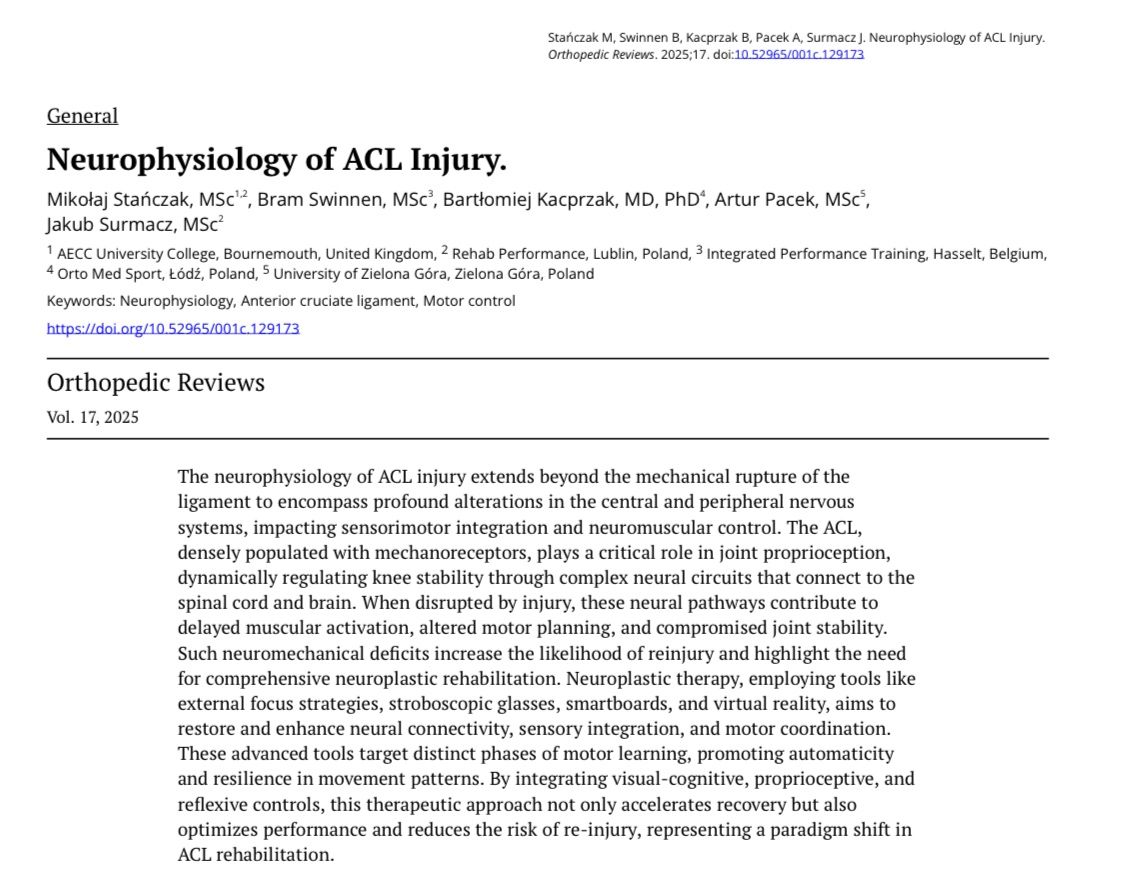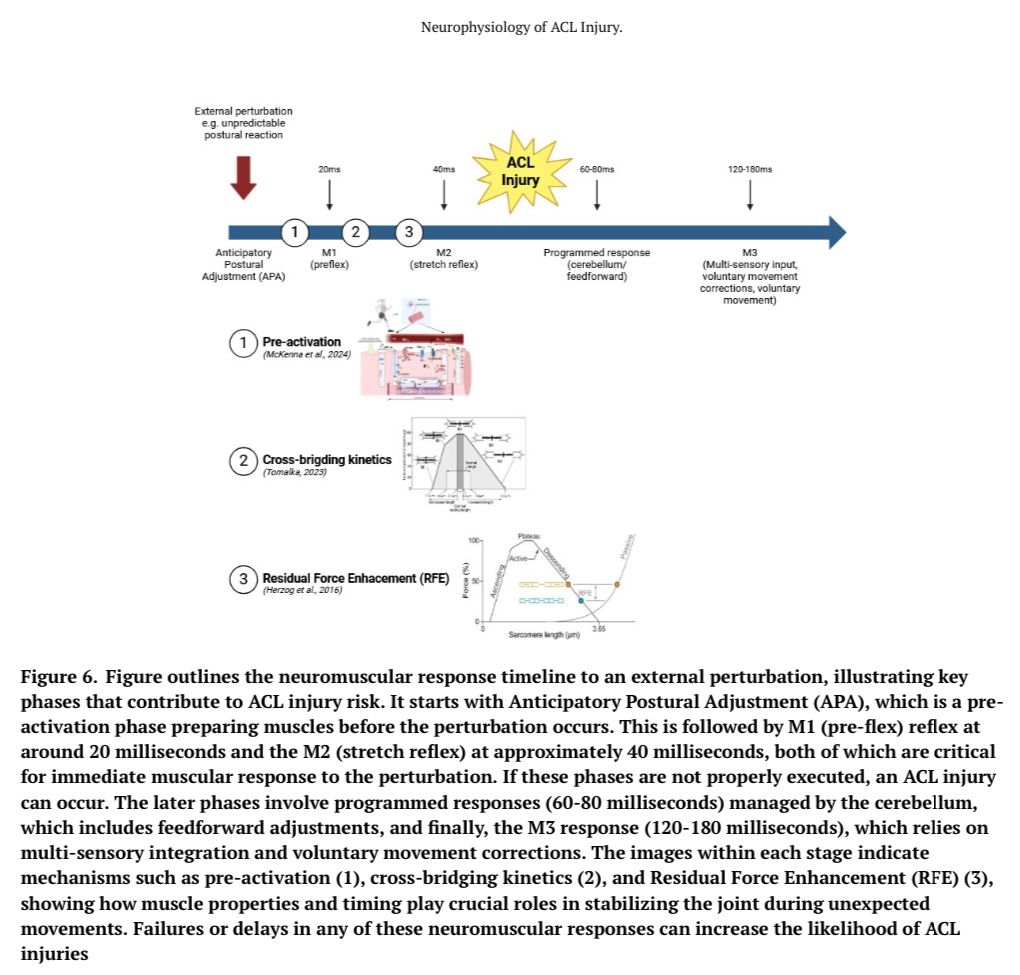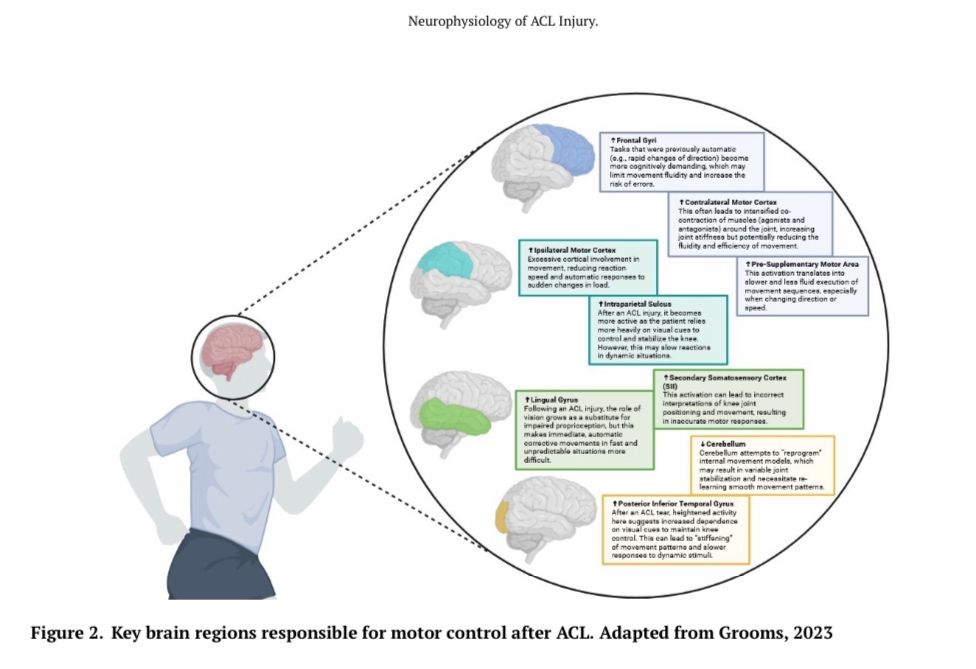Neurophysiology of ACL Injury
Navigation:
- How do I find a good ACL physical therapist?
- How do I find a good ACL doctor?
- Zamst
- Why are so many female footballers suffering ACL injuries?
- Aspetar Clinical Practice Guideline on rehabilitation ACLR
- Melbourne ACL Rehabilitation Guide
- HOW an athlete returns is more critical than WHEN
- Anterior Cruciate Ligament (ACL) Injury Hidden in the Complex Sensorimotor System
- ACL Reference Values
- Psychological readiness
- Virtual Reality and Artificial Intelligence: Transforming Injury and ACL Rehabilitation
- ACL rehab staying motivated
- The Team ACL effect
- Keiser
- Game Ready Pro 2.1.
- Compex
- ACL reconstruction rehabilitation: decades of change
- Reference values for quadriceps and hamstrings strength & double- and single-leg jump tests
- Return to running too quickly after ACL surgery
- Blood Flow Restriction Training in ACL Rehab
- Interview TeamACL professional Luis Escudero
- Influence of female sex and graft choice on the incidence of cyclops lesions after ACL reconstruction
- 10 Mistakes why ACL rehab regularly fails
- Isokinetic testing after ACL rehabilitation in football players
- Return to sports after an ACL reconstruction in 2024
- Latest content
This work highlights the importance of approaching ACL injuries as a neurophysiological injury, not just as a structural one.
The neurophysiology of ACL injury extends beyond the mechanical rupture of the ligament to encompass profound alterations in the central and peripheral nervous systems, impacting sensorimotor integration and neuromuscular control. The ACL, densely populated with mechanoreceptors, plays a critical role in joint proprioception, dynamically regulating knee stability through complex neural circuits that connect to the spinal cord and brain. When disrupted by injury, these neural pathways contribute to delayed muscular activation, altered motor planning, and compromised joint stability. Such neuromechanical deficits increase the likelihood of reinjury and highlight the need for comprehensive neuroplastic rehabilitation. Neuroplastic therapy, employing tools like external focus strategies, stroboscopic glasses, smartboards, and virtual reality, aims to restore and enhance neural connectivity, sensory integration, and motor coordination. These advanced tools target distinct phases of motor learning, promoting automaticity and resilience in movement patterns. By integrating visual-cognitive, proprioceptive, and reflexive controls, this therapeutic approach not only accelerates recovery but also optimizes performance and reduces the risk of re-injury, representing a paradigm shift in ACL rehabilitation.
“ ”
Membership your group allowed us to write an article in a good orthopedic journal
– Mikołaj Stańczak –
Reference: Bram Swinnen | Mikołaj Stańczak | Jakub Surmacz



